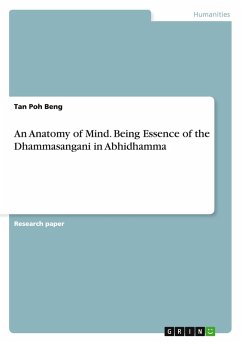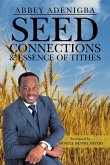Research Paper (undergraduate) from the year 2015 in the subject Theology - Miscellaneous, grade: 3.80, , course: Master Degree in Buddhist Studies, language: English, abstract: The Dhammasangani is a summary of the key principles of the other six books of the Pali Abhidhamma Pitaka. Its contents was written according to the Buddha's teaching, which uncover every latent and functional bits of our subtler interior strata that comprises the 89 consciousness, the 52 mental concomitants, and total 279 corporeal phenomena-explicitly analyse and explain these often unseen complexities within us, from the psychological, philosophical, moral and ethical aspects. This is a book which lays the solid foundation theories and principles for its practical side of the Samantha-Vipassana.The present work is the result of almost a year of inquiry into the fundamental tenets of the Dhammasangani in the Theravada school of Abhidhamma. There were daunting yet enriching challenges in the preparation of the work such as the encounters with sometimes the ambiguous or different explanations for certain terms and principles from some of the translated modern literatures of the Dhammasangani. For such cases I made consultation to the Pali texts of the Dhammasangani, to its commentary Atthasalini and the sub-commentary Dhammasangani-Mulatika. Subsequent consultations to the Pali-English dictionaries by P.T.S. and others, are also sometimes faced with different renderings. My decision in such cases was including all their suggested meanings relevant to that context, and sometimes giving my recommended choice to what looked like is the obvious answer, and stating my reasons whenever that was necessary.Another difficult task was to still following the topical layout of the Dhammasanghani but to steer clear of its traditional way of catechetical exposition, and at the same time able to present as much as of its theories and essence as possible. We know that a well-presented table speaks a thousand words. Hence the several tables that I have created and every detailed explanations followed thereto, should be the effective analytical study guides for the new students. The concept of the tables and also much of the contents of the work, have drawn a great deal of the ideas from post-canonical literatures of the Abhidhammattha-sangaha, Visuddhimagga, and the mentioned Chinese sources. My decision to also include the succinct Chinese definitions for the Abhidhamma terminologies is primarily to facilitate those bilingual readers to more comprehensibly understand the connotative nuances of the words in Pali, by comparison of the English and Chinese translations.








